- 中文
- EN
- Français
- 日本語
- 한국어
- 繁體中文
“Hearing and Seeing Huxiang - the Exhibition of Hunan Musical Relics” Launched in the Hunan Museum
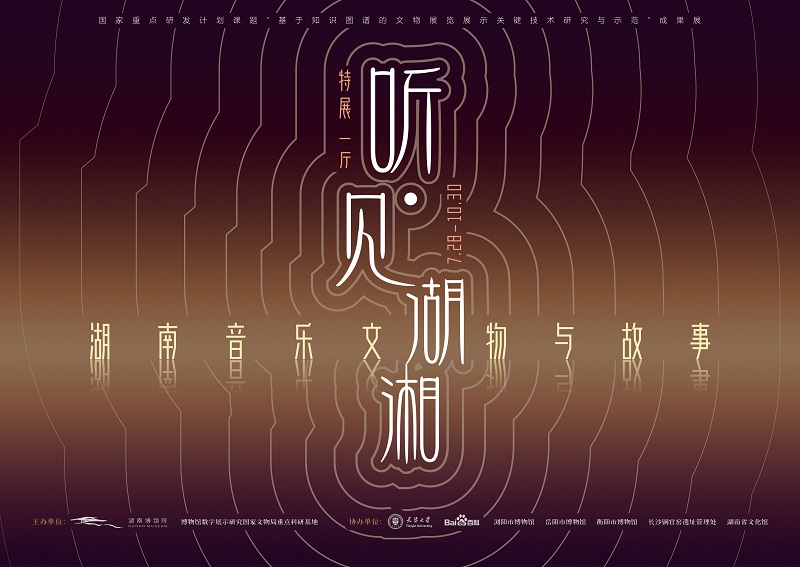
Music is the forerunner of civilization, nourishes the childhood of human beings, and carries the memory of the nation. The landscapes in Hunan are gorgeous, everything is vigorous, and rivers flows for ages, nurturing unique and rich musical culture. On the morning of July 28, the exhibition "Hearing and Seeing Huxiang - the Exhibition of Hunan Musical Relics" was grandly opened in the Art Hall of Hunan Museum. The Cultural Heritage of Hunan, the Hunan Provincial Musicians Association and other relevant leaders and experts attended the opening ceremony.
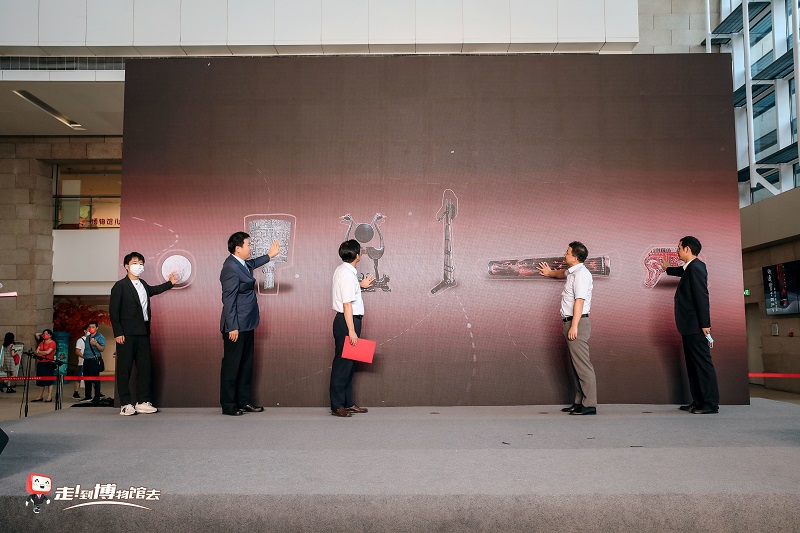
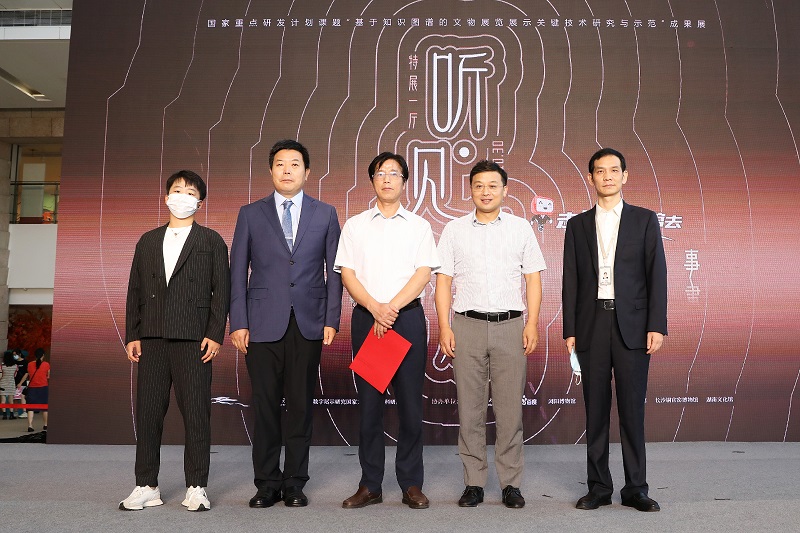
This exhibition is based on the "13th Five-Year Plan" National Key Research and Development Project - "Research and Demonstration of Key Technologies for Cultural Relics Exhibition Based on Knowledge Mapping", which was jointly undertaken by the Hunan Museum, the Tianjin University and the BIDU Company. The exhibition brought together 170 pieces of music collections in Hunan Province, using the structure of modern music to tell the development of Hunan music culture, combining the musical relics with multi-digital display technology, integrating the Hunan music-related cultural relics, musical sounds, people, literature, history and images together, transcending the traditional exhibition and creating an dynamic form and audiovisual feast of music civilization, allowing the audience to become the percipient, witness, inheritor and creator of Hunan music.
The exhibition made full use of key technologies such as multi-modal cultural relics knowledge map, multi-perception mixed reality, and launched "High Mountains and Flowing Waters Meet Bosom Friends" - Hunan Music History Exhibition. The exhibition consisted of several digital exhibitions and the mini-program for cultural relics knowledge mapping guide such as the Visualization of Hunan Music Knowledge Mapping, Liuyang Ancient Music MR Experience, Guqin Virtual Playing, which brought together more massive and comprehensive knowledge of cultural relics, provided more vivid and immersive virtual-real interaction, explored the innovative display of precious cultural relics, broadened the breadth and depth of exhibition content to meet the public's more diversified and personalized knowledge needs, provided the public with a higher quality exhibition experience, and solved key problems such as single form of museum exhibitions and less content support.
At the same time, the Hunan Museum officially rolled out the cartoon images of this exhibition - the band "Xiang Bo Bo". The band is the first musical relics band among the national museums, the name of band is a homonym of the Hunan Museum-"Xiangbo". The design of six figures in this band were based on six representative Hunan musical relics from different periods, and their connotations and characteristics of these musical relics were discovered and integrated into imagination and creativity, so as to attract the attention of young people and lead them to understand the millennium music civilization of Hunan. In addition, the Hunan Museum will also launch a series of supporting activities and derivative products during the exhibition, such as the Chinese Valentine's Online Festival Concert, music and dance performances in the exhibition hall, online master talks, on-site expert lectures, a series of digital collections and creative cultural products etc. Through the cooperation of online and offline, driven by the digital creative industry, the exhibition will continue to extend the cultural industry chain, and strive to expand the new business mode of museum culture , and continue to stimulate the life vitality of museum exhibitions, try to extend the life cycle of the museum exhibition.
The exhibition is open to the public from now until 30 October in the No.1 Special Exhibition Hall on the first floor of the Hunan Museum. Tickets for the exhibition are priced at RMB 50 and visitors can purchase tickets on the official WeChat platform and Alipay app of the Hunan Museum and enter the museum via a special channel.

The cartoon image of this exhibition - "Xiang Bo Bo" Band
Contents of Each Chapter
Foreword
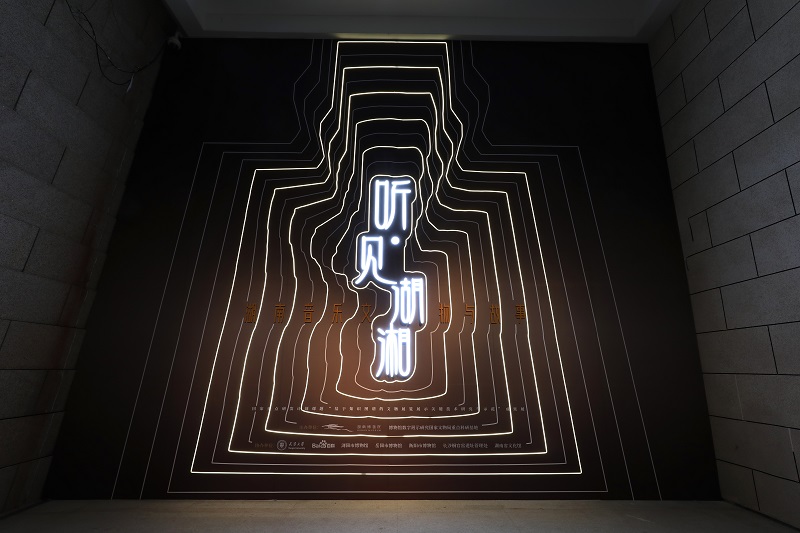
More than 6,000 years ago, on the banks of the Lishui River, people picked up the tools at hand, hit the ball, sang and danced. During hunting, playing or dancing activities, musical instruments of various textures were used to express joy and amusement, and also opened up Huxiang ancestors' cognition of the rhythm of life. During this period, ceramic rattles, a representative artefact of the Daxi culture, were extremely popular, whether as toys, instruments (early musical instruments or ritual instruments) or ceramic decorative objects, they greatly enriched the spiritual life of the ancients.
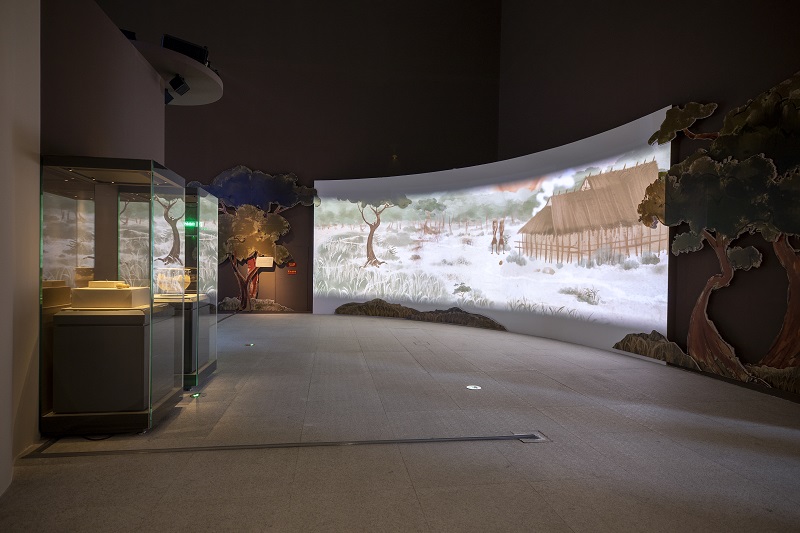
The digital exhibition “Sound from the Heart” is a perfect combination of traditional painting, three-dimensional wall modelling, projected image and lighting and sound, using the village of Chengtoushan as the backdrop of the story and vividly recreating the joyful scene of the ancestors’ fishing and hunting in the early morning and using musical instruments to celebrate the harvest.
Chapter One
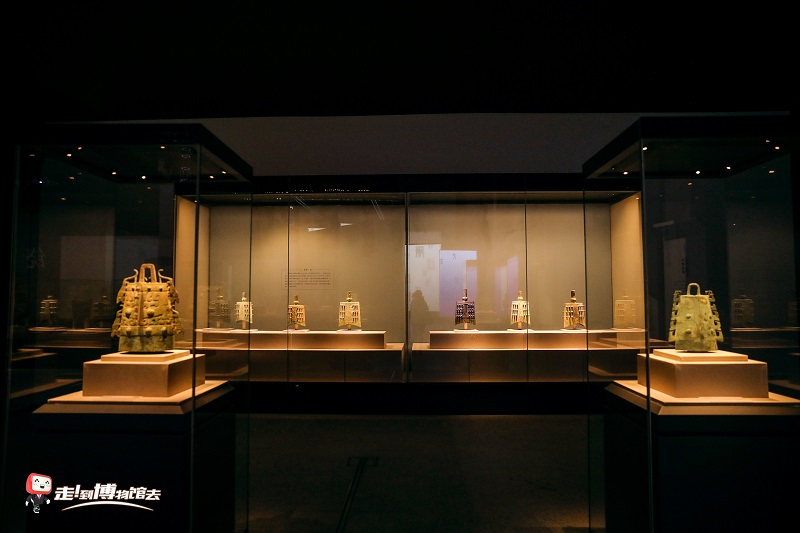
In the late Shang and the early Zhou Dynasties, local artisans in Hunan, a region influenced by the Shang culture of the Central Plains, created a large bronze musical instrument-Nao, which is a percussion instrument, used as a ritual instrument to worship the nature. Nao,Bo and Yongzhong were exhibited in this chapter, demonstrating the unique ritual culture of the ancient Hunan people. The further development of bronze instruments such as Nao, Zhong, and Bo, and the determination of two-tone effect, laid the foundation for the ritual music culture of the Zhou Dynasty.
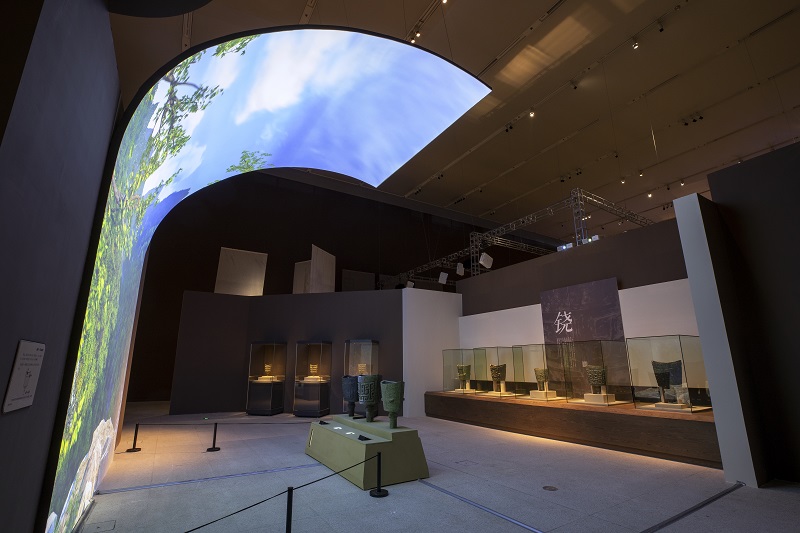
The digital exhibition "Harmonious Sounds from Heaven and Earth" used 3D printing technology combined with metal materials to highly recreate bronze Nao, and linked the interaction of Nao's percussion with the curved projection screen to create an immersive and realistic experience, so as to show Nao’s function of worship. After visitors tap the Nao, they can see different scenes such as wind, rain, thunder and lightning, falling autumn leaves, and white snow when worshiping the nature.
Chapter Two
From the mid-Spring and Autumn Period to the Warring States Period, Hunan was incorporated into the territory of Chu(State), and its music culture showed the solemn and profound, romantic and sentimental beauty of Chu tunes. During this period, hanging drums with a tiger as the base and a phoenix bird as the stand were popular in Chu and were widely used for rituals, feasts and warfare. For example, the lacquered wooden drum on tiger bases and phoenix birds is very representative, with two crouching tigers as drum bases and two phoenix birds as drum frames, the drum is hung above the two phoenixes and can be played in the air. In addition, the diversity of musical instruments has also foster the "Eight-Tone Harmony" musical performance form, which constituted the grandeur of Chu’s music and dance.

In the digital exhibition "By the Autumn Breeze", several sets of screens hung downwards, combining with the exhibits below to create a dreamlike, partly hidden and partly visible world. As visitors walk through the exhibition hall, they are greeted by the poetry which was composed by Quyuan, and are presented with scenes of Quyuan wandering the shores of the lake and the fierce war in the Chu Kingdom.
Chapter Three
From the Han Dynasty to the Wei and Jin Dynasties, traditional Chinese musical forms changed from the ritual music to the dance music, various art forms were combined into one musical performance, reflecting time features of people’s pursuit of high-quality and joyful life. For example, various musical instruments, figurines of playing music and figurines of singing and dancing unearthed from the Han tomb in Mawangdui greatly represented characteristics of that times, and were detailed portrayals of the life of the nobles in the Han Dynasty. In the Han Dynasty, singing and dancing were popular. The nobles kept a group of artists who were experts in singing and dancing and playing musical instrument, they formed family bands, some figurines stood up and danced in long-sleeved shirts, some sat and chanted with their hair combed in buns, and some performed Se and Yu together.
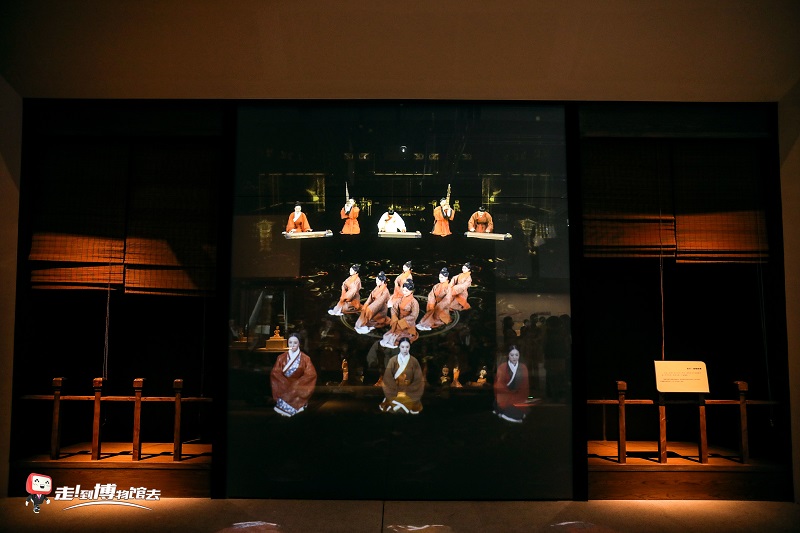
In the digital exhibition "Song and Dance", holographic virtual technology was combined with real-life performance, background, space images, dance figurines, lighting and music, all of which were mixed into one to recreate the singing and dancing scene of Western Han Dynasty, bringing both visual and aural enjoyment. The audiences are both visitors and participants, creating a realistic spatial experience with a combination of live action and special effects.
Chapter Four
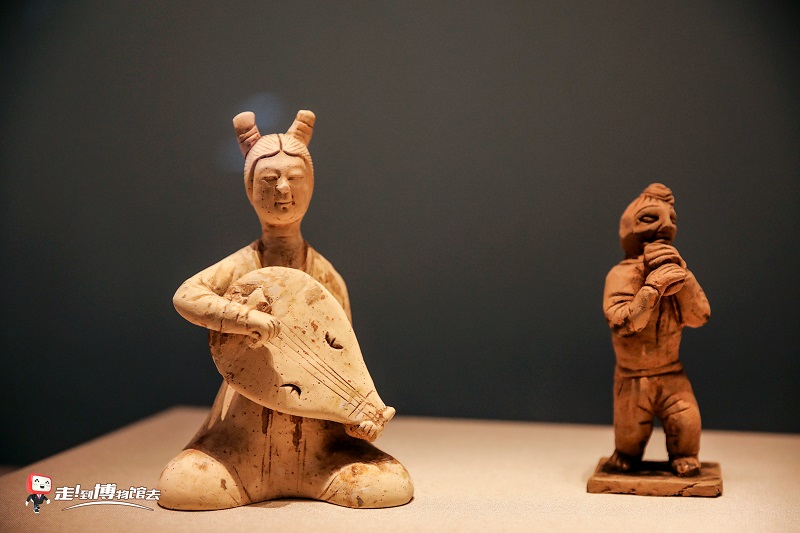
This part focuses on displaying various musical relics unearthed in the Sui, Tang, Song and Yuan Dynasties in Hunan, reflecting the musical and artistic achievements of this period, which flourished under the heyday of the grand unification. There are many figurines in various shapes, from which we could see that a great deal of exotic music and dance had already deeply influenced the music and dance art of the Tang Dynasty, and was much loved and respected by the nobles, writers and common people, bringing the most dazzling national style to the Tang Dynasty. At the time, Hunan was a place of relegation and exile because it was far from the political centre. Some artists, such as Li Bai, Bai Juyi, Du Fu, Liu Zongyuan, Liu Yuxi and Li Guinian, put their aspirations and ambitions into the sound of the Guqin(a traditional Chinese stringed musical instrument) and their poetry, contributing to the flourishing of Qin music of Hunan.
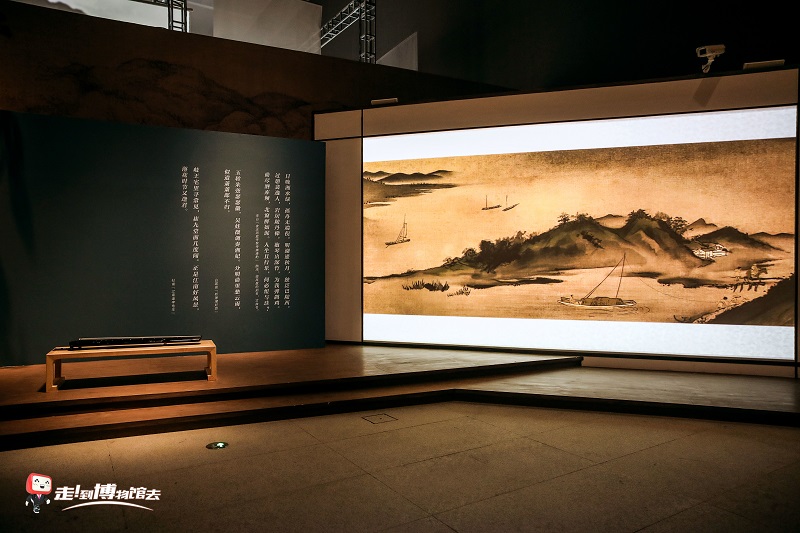
The "Water and Cloud of Xiaoxiang" played on a loop in the exhibition hall was performed by Mr. Ding Chengyun, a representative inheritor of the national intangible cultural heritage of Guqin art and a professor at the Wuhan Conservatory of Music. Amidst the powerful sound of the piano, a vivid and unique activation map of "Eight Views of Xiaoxiang" slowly unfolded. If a real person is playing in the exhibition hall, the Fourier algorithm will be used to identify the sound of the music, and interpret the content of the music through pictures and images. The sound of the music subtly controls the content of the background images, creating a combination of audio and visual interpretation, giving a dynamic spatial experience
Chapter Five
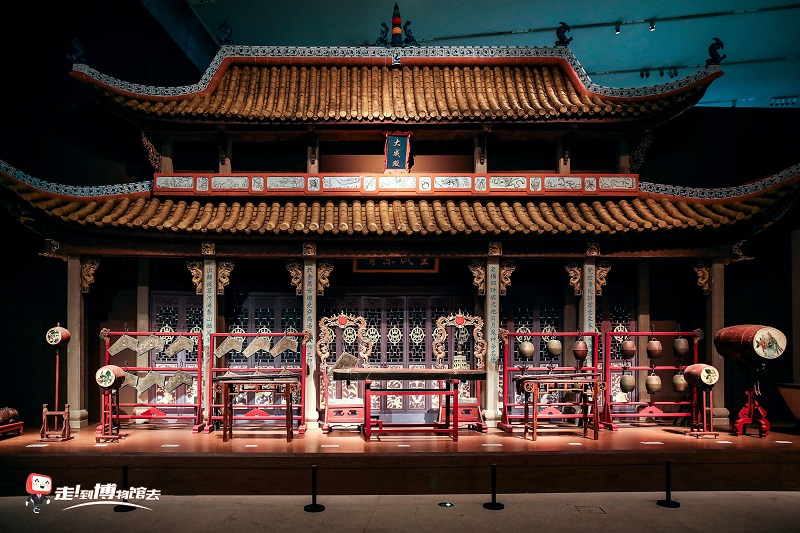
Since the Ming and Qing Dynasties, Huxiang music has entered a new stage of historical development. In the fifth part, people of civil and military ability could express their political aspirations through music, conveying their sentiments of governing the world and saving the country, as well as their desire to survive and innovate. Among them, the Guqin called Bengting was used during the lifetime of Tan Sitong, a famous figure of Hunan in modern times, which is an important physical source for the study of Tan Sitong's life and the art of the Chinese Guqin. In addition, there is music of the ethnic groups, which is cheerful and joyful, commemorates the spirits of the ancestors, and encourages production, with reed-pipe singing and drums thumping. The "Ding Festival" at the Wenmiao Temple in Liuyang is a direct testimony to the traditional culture of respecting Confucianism, and highlights the magnificent music of Hunan.
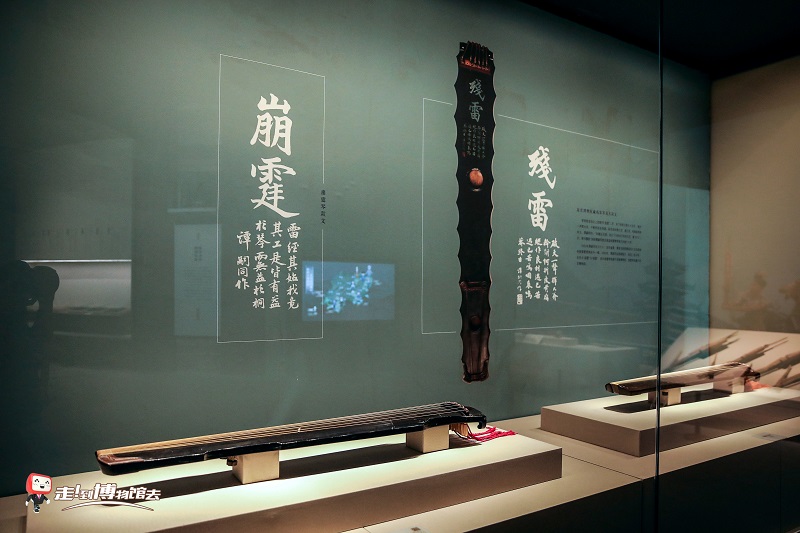
The digital exhibition “Liuyang Ancient Music MR Experience”, a collaboration between the Hunan Museum and Baidu, attempted to recreate the ritual scenes of Liuyang Ancient Music based on digital technologies such as VPAS virtual tours, overlaying the environmental information of the real exhibition hall and the knowledge information associated with the cultural relics in real time onto the same screen as well as the spatial environment to achieve a hybrid display experience. Visitors can wear Hololens2 to listen to virtual music explanations, enjoy ritual music and dance performances, try out special musical instruments and read about cultural relics knowledge of eight musical instruments, not only to gain an immersive experience, but also to gain insight into the content of the knowledge map that interests them.
Last Chapter
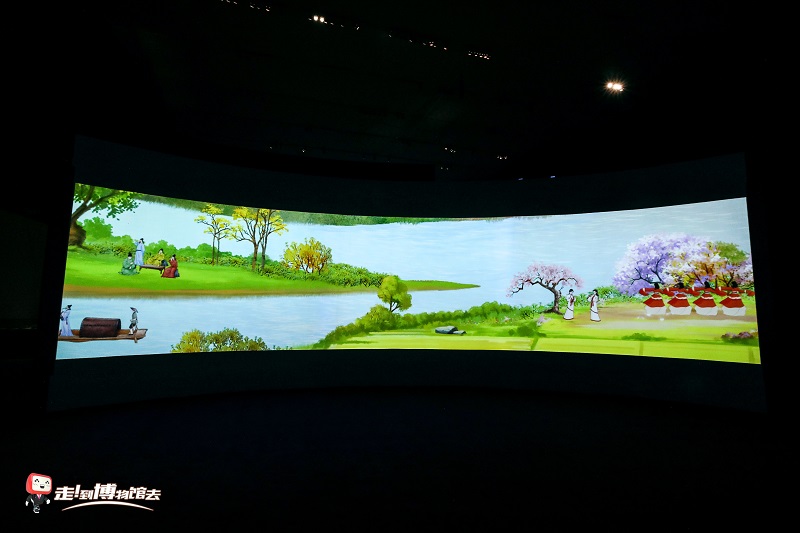
In this chapter, the digital display adopted the meticulous painting style to create a long scroll of Huxiang landscape, took the viewer on a journey through the development of music in Hunan and combined ancient music with modern musical to play classical music Liu Yang River, showing the development of the times and the heritage and innovation of ancient music. Visitors can also hum along as the fish and birds in the scrolls change according to the decibels, adding fun and interactivity of the display.
The "High Mountains and Flowing Waters Meet Bosom Friends" - Hunan Music History Exhibition is a collaboration between the Hunan Museum and Tianjin University, which visualized multi-dimensional and multi-modal data on important musical relics, musical documents, musical figures and musical forms in Hunan and even Chinese music history into natural landscapes, and allowed visitors to freely click on the many knowledge icons on the large touch screen to explore the long history and richness of Hunan and Chinese music culture.



